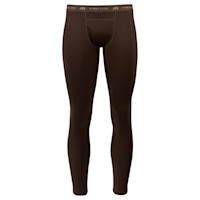
We like to debate about how many rifle cartridges we carry into the field but I’ve never heard anyone discuss whether to carry three or seven arrows in their quiver. And that may be simply because of quiver capacity.
When I asked several diehard MeatEater archery hunters (Jason Phelps, Mark Kenyon, Tyler Jones, KC Smith, Tony Peterson, and Clay Newcomb) how many arrows they carried and why, the answers were the same. “I carry five to six, or however many my quiver will hold,” or “I just max out my quiver.” But that still does leave some room for discussion.
Why not just carry one or three? Well, it turns out that even these semi-pro (whatever that means) archery hunters sometimes have a bad hit and need a follow-up shot. Interestingly, out of the seven answers I got, no one ever got a second shot after a clean miss. But animals, and in the respondents’ case mostly whitetails (with one mule deer and one elk mixed in), do move when they hear the shot. When asked why they needed a second or third arrow all of the respondents answered that it was because of a spine-shot after an animal had “ducked the arrow” or “jumped the string.”
Tony Peterson of Wired to Hunt responded, “This is most common during a spine shot. That's an immediate second-arrow situation for me.” Luckily, spine-shot animals are somewhat immobilized and everyone said that getting a second arrow into the animal was quick and at close range.
Also interesting was that only two of the hunters said that they had fired more than a second arrow, and only one had emptied their quiver—which was four arrows that day. In that case, the hunter missed their second and third shots and hit with the fourth. Tyler Jones from The Element said, “The last two animals have both been high spine shots that immobilized the animals. One was a mule deer that would have for sure needed another arrow to quickly kill. The other was a nilgai antelope bull that I shot on a frontal (shot). I think he would have died quickly since I hit some vital stuff, but I still went up and put two more arrows into him to finish him quickly.” For everyone else, the second arrow sealed the deal.
The second most common time for a follow-up shot was after a gut shot. The animal lingered long enough that the hunter was able to shoot again. Obviously, anytime you can get a second shot on an animal, with a bow or rifle, you should try to. I’ve yet to hear a hunting story where someone tells me they wished they hadn’t taken follow-up shots.
How often are follow-up shots needed? I asked the crew how many times out of the last ten animals they arrowed a follow-up shot was taken. These guys must be good because the average from seven hunters was 1.25. I’ve yet to arrow ten animals but out of the last five, one needed follow-up shots. I put two more arrows into a bull elk at close range, after he had been immobilized by the first.
When I asked if anyone carried a “grouse arrow,” the answers were split. For those that don’t know, elk country often harbors dusky grouse, the two seasons overlap, and grouse often present easy archery shots. Half of the group carried them and the other half were too focused on big game. No one carried “grouse arrows” on a white-tailed deer hunt, only elk.
From a relatively small sample size of folks who hunt more than the average hunter, the takeaway is this: follow-up shots are not needed often, and when they are you’ll probably only need one to two more arrows. But we’re all still going to carry as many arrows as our quiver holds.
If a company starts making quivers that hold ten arrows, I’m sure there are some that would carry all ten. The only drawback would be that eventually too many arrows would add significant weight. I’ll be carrying five arrows elk hunting this fall, one of them being a grouse arrow. I like to eat grouse in the backcountry and the grouse arrow can also be used to shoot stumps and dirt clumps, keeping me sharp.






